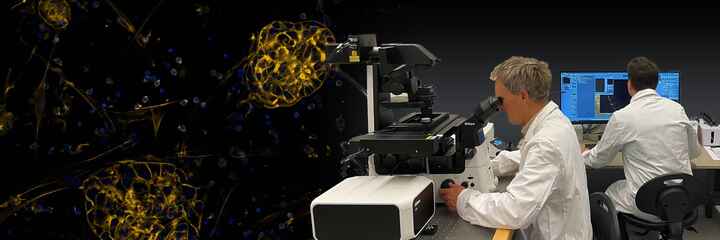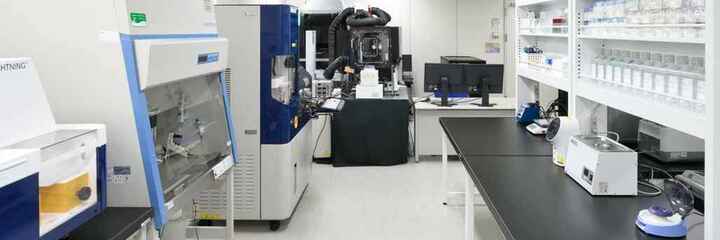News
Nikon Introduces New Modular Components for TIRFM
Nov 1, 2002
Complete Turnkey System for TIRF Microscopy to Be Unveiled at Society for Neuroscience Show in Orlando
Today, Nikon Instruments has taken innovative microscope technology one step further with the introduction of modular components and complete turnkey systems for Total Internal Reflection Fluorescence (TIRF) Microscopy.
A TIRF microscopy system utilizes evanescent wave illumination. This illumination causes an extremely thin section of fluorophor excitation resulting in high contrast real time imaging of labeled molecules at the cell membrane or basal plane of the specimen. The signal-to-noise ratio (S/N) achievable by evanescent wave illumination makes it possible to image the complex and dynamic interactions of single protein molecules in living cells.
The unique extendible configuration of the Nikon TE2000 enables simultaneous mounting of both TIRF and epi-fluorensce illumination systems, which allows easy switching between the two, or image overlay. Nikon's unique Turnkey TIRF illumination system allows for up to three laser lines of illumination to be selected for use by the investigator and provides the capability of multi-spectral TIRF images to be collected either simultaneously or sequentially. The Nikon Turnkey TIRF Systems Product is easy to align for perfect TIRF imaging and is completely laser safe and certified under the FDA certification procedures.
Nikon's new Plan Apo 60XH 1.45 N.A. and Plan Apo 100XH 1.45 N.A. TIRF objectives provide the numerical aperture (NA) necessary to obtain TIR through the objective lens without the necessity for toxic, high refractive index immersion media or sapphire cover slips. These objectives, designed for the inverted microscope, have an "oil catch collar" to prevent immersion oil from running down the objective, which can damage the system. The 60X TIRF oil immersion objective boasts a unique correction collar for cover glass thickness that has been calibrated for both room temperature (23 degrees C) and physiological temperature (37 degrees C). It is now possible to correct for temperature-induced changes in the refractive index of immersion media, which can cause spherical aberrations.



